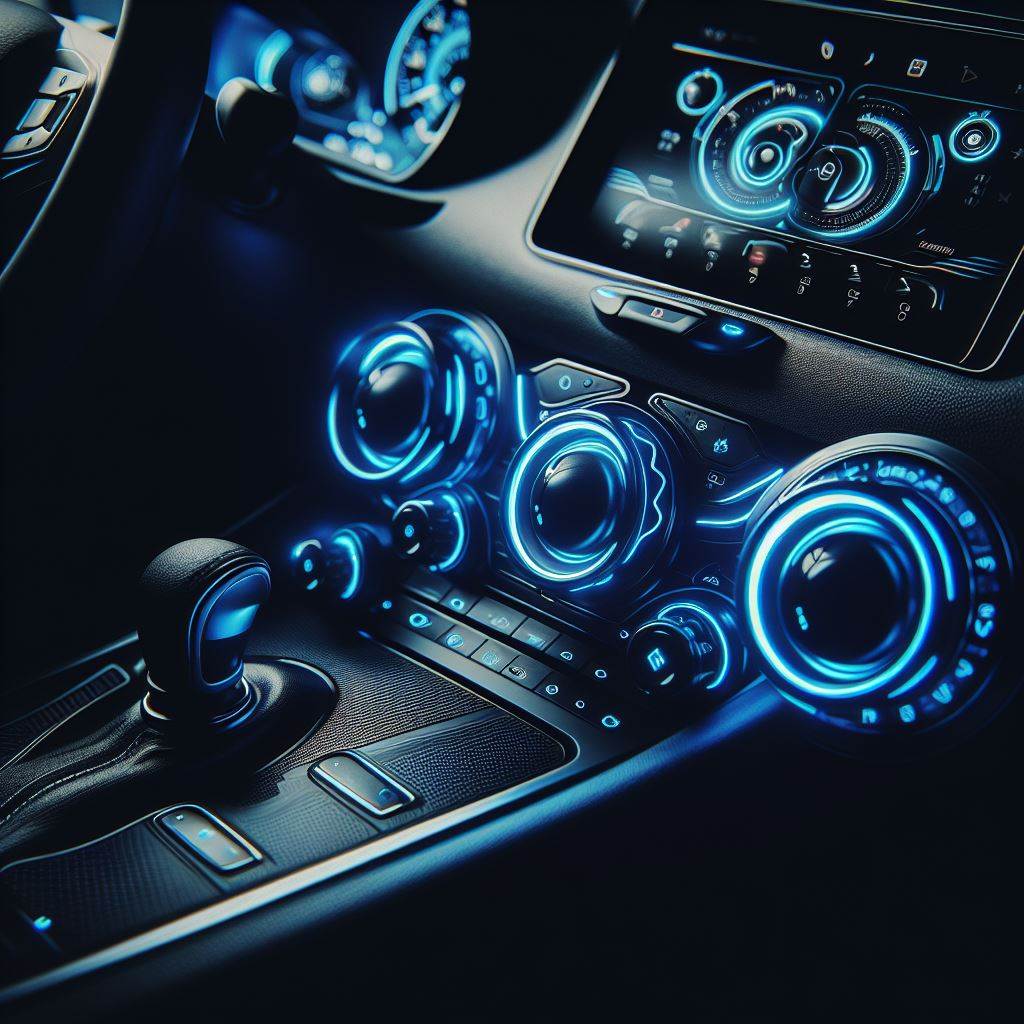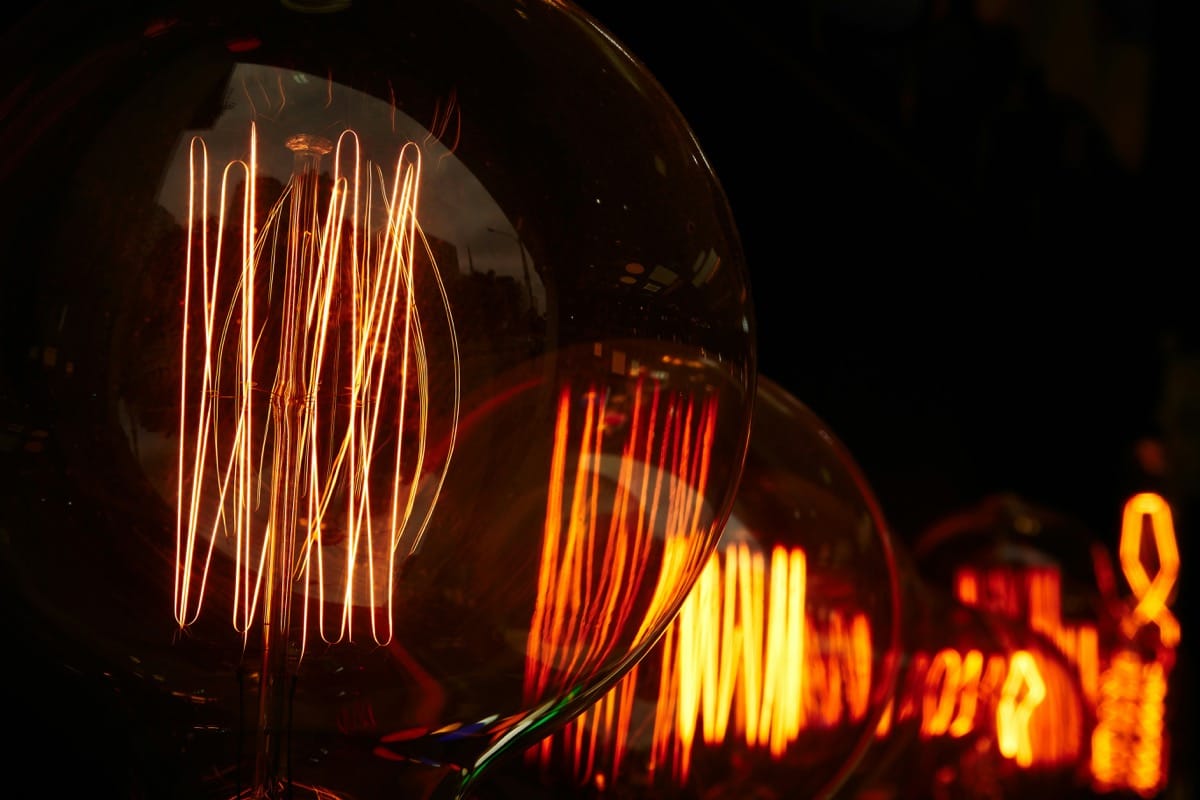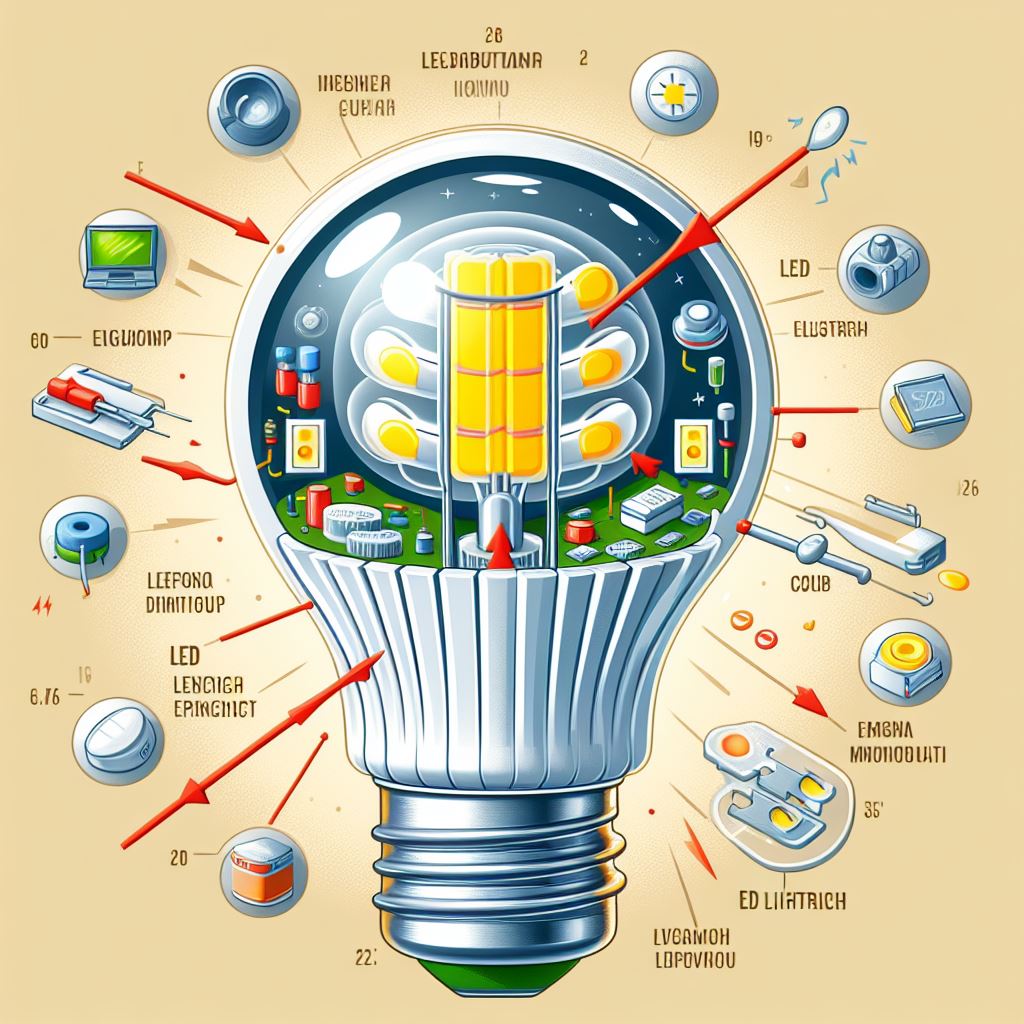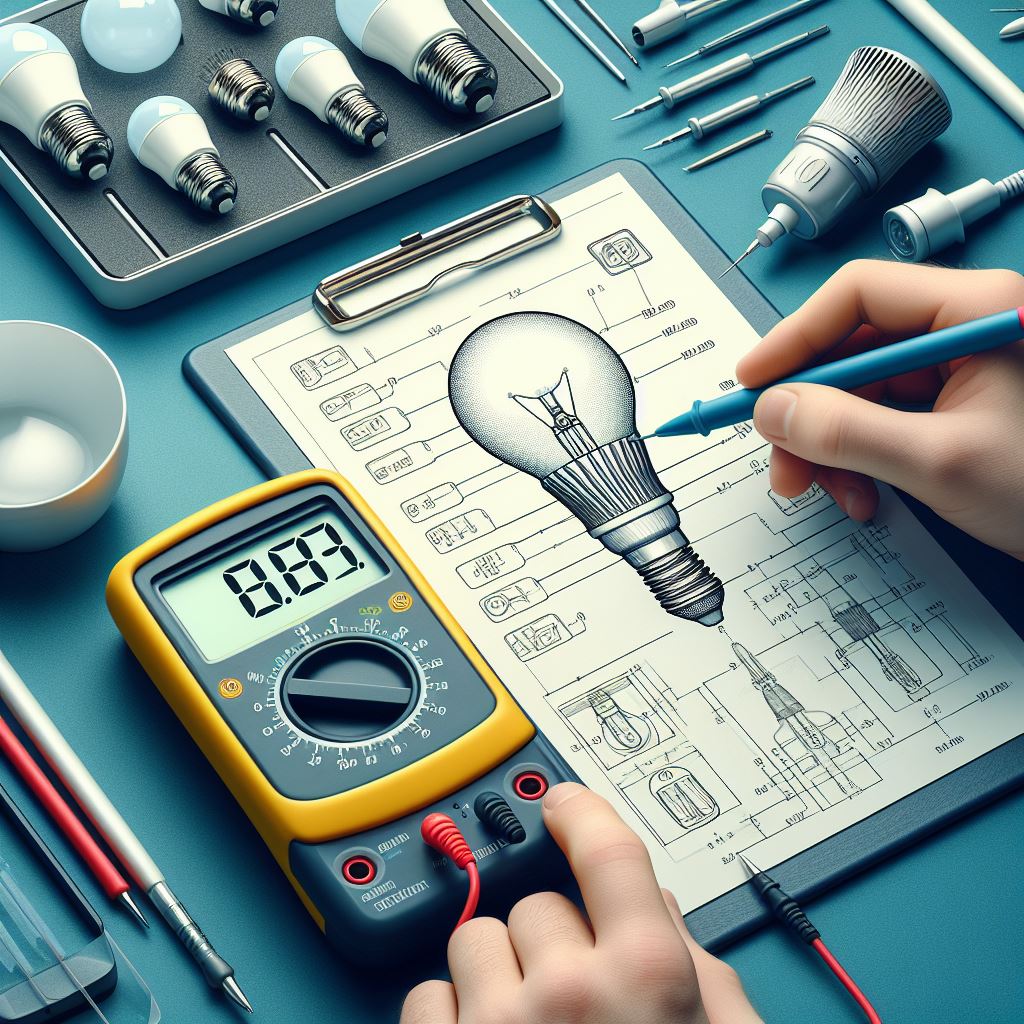Are you tired of dealing with hyper flash when you upgrade to LED bulbs in your vehicle? As an expert in the field, I understand the frustration that comes with this issue. But fear not, there are solutions available to help you stop hyper flash with LED bulbs once and for all. In this comprehensive guide, we will explore the reasons behind hyper flash with LED bulbs and provide you with practical tips and solutions to remedy the problem. Whether you are a DIY enthusiast or seeking professional assistance, this blog post will equip you with the knowledge needed to ensure a smooth and hassle-free transition to LED lighting in your vehicle. So sit back, relax, and let’s dive into how you can put an end to hyper flash with LED bulbs.
Understanding Hyper Flash in LED Bulbs
Have you recently switched to energy-efficient LED bulbs only to encounter the annoying issue of hyper flash when using your turn signals? If so, you’re not alone. Let’s delve into why this phenomenon happens and explore some simple solutions to stop hyper flash with LED bulbs.
Common Causes of Hyper Flash with LED Bulbs
Hyper flash, also known as hyper blinking, occurs when the turn signals blink at a much faster rate than normal. Here’s why it happens:
- Incompatibility: LED bulbs draw less power than traditional incandescent bulbs, causing the flasher unit to perceive them as faulty or missing.
- Flasher Module: The flasher module in your vehicle may not be compatible with the low power draw of LED bulbs, leading to hyper flash.
Choosing the Right LED Bulbs to Prevent Hyper Flash
One way to prevent hyper flash is to ensure you are using LED bulbs specifically designed for your vehicle. Look for bulbs that are compatible with your car’s make and model to avoid any compatibility issues.
Using Resistors to Eliminate Hyper Flash
If you’re experiencing hyper flash with LED bulbs, resistors can be a cost-effective solution. These small devices increase the load on the flasher unit, simulating the power draw of incandescent bulbs and eliminating the hyper flash issue.
Installing an Electronic Flasher to Stop Hyper Flash
Another alternative is to replace your flasher unit with an electronic flasher designed to work with LED bulbs. These flasher units are adjustable and eliminate hyper flash by detecting the lower power draw of LED bulbs.
Don’t let hyper flash dampen your LED lighting experience. By understanding the causes of hyper flash and implementing the right solutions, you can enjoy the benefits of energy-efficient LED bulbs without the annoying blinking issue.
Common Causes of Hyper Flash with LED Bulbs
So you’ve made the switch to LED bulbs in your vehicle, hoping for that modern, energy-efficient lighting upgrade. But suddenly, you’re facing the annoying issue of hyper flash, where your turn signals blink too rapidly. What causes this aggravating problem?
Incorrect Flasher Relay Compatibility
Your vehicle’s flasher relay may not be compatible with LED bulbs, causing them to draw less power than traditional incandescent bulbs, triggering hyper flash.
Low Resistance in the Circuit
LED bulbs have lower resistance compared to incandescent bulbs, disrupting the equilibrium in your turn signal circuit and leading to hyper flash.
Insufficient Power Draw
Since LED bulbs consume less power, your vehicle might interpret the lower energy usage as a burnt-out bulb, prompting hyper flash to signal the issue.
Choosing the Right LED Bulbs to Prevent Hyper Flash
When it comes to stop hyper flash with LED bulbs, one of the crucial steps is selecting the appropriate LED bulbs. Making the right choice in the beginning can save you time and hassle down the road. Let’s dive into some essential tips for choosing the right LED bulbs to prevent hyper flash.
Consider the Following Factors:
1. Compatibility: Ensure that the LED bulbs you choose are compatible with your vehicle’s make and model to avoid any compatibility issues that could lead to hyper flash.
2. Quality: Opt for high-quality LED bulbs from reputable brands. Cheaper alternatives might seem appealing initially, but they could result in hyper flash due to inferior construction.
3. Resistor Built-In: Look for LED bulbs that come with built-in resistors. These resistors help regulate the flow of electricity, reducing the likelihood of hyper flash.
Additional Tips for Choosing LED Bulbs:
1. Consult an Expert: If you’re unsure about which LED bulbs to choose, consider seeking advice from a professional. They can recommend the best options based on your specific vehicle and needs.
2. Read Reviews: Before making a purchase, take the time to read customer reviews. Feedback from other users can provide valuable insights into the performance of the LED bulbs in preventing hyper flash.
3. Check Compatibility: Double-check the compatibility of the LED bulbs with your vehicle’s lighting system. Ensuring a proper fit is crucial for preventing hyper flash.
4. Invest in Quality: While it may be tempting to opt for cheaper alternatives, investing in high-quality LED bulbs can save you from dealing with hyper flash issues in the future.
By taking the time to choose the right LED bulbs for your vehicle, you can avoid the annoyance of hyper flash and enjoy a seamless lighting experience. Remember to prioritize compatibility, quality, and built-in resistors when making your selection.
Using Resistors to Eliminate Hyper Flash
So, you’ve upgraded your vehicle’s lighting to efficient LED bulbs, but now you’re facing the annoying issue of hyper flash. The good news is, there are solutions to this problem, and one effective method is using resistors!
What are Resistors and How Do They Help?
Resistors are small electronic components that resist the flow of electrical current. When installed in parallel with your LED bulbs, resistors mimic the power draw of traditional incandescent bulbs, tricking your vehicle’s flasher relay into operating as normal.
How to Install Resistors
Installing resistors to eliminate hyper flash is a simple process that can typically be done in just a few steps:
- Locate the turn signal bulb that is hyper flashing.
- Disconnect the vehicle’s battery to ensure safety.
- Connect the resistor in parallel with the LED bulb, ensuring a secure connection.
- Reconnect the battery and test the turn signal to ensure the hyper flash is eliminated.
Benefits of Using Resistors
- Simple Solution: Resistors are easy to install and require minimal technical knowledge.
- Cost-Effective: Compared to other methods, resistors are a budget-friendly solution to hyper flash issues.
- Reliable Fix: Once installed correctly, resistors provide a reliable and long-term solution to hyper flash.
By incorporating resistors into your LED lighting setup, you can effectively eliminate the hyper flash issue and enjoy the benefits of energy-efficient LED bulbs without any drawbacks. It’s a small but impactful upgrade that can make a big difference in your driving experience!
Installing an Electronic Flasher to Stop Hyper Flash
So, you’ve tried using resistors and have had no luck eliminating hyper flash with your LED bulbs. Fear not, there’s still hope! One highly effective solution that can put an end to hyper flash is installing an electronic flasher. Let’s delve into how this method can help you rectify the issue once and for all.
What is an Electronic Flasher?
Essentially, an electronic flasher is a modernized version of the traditional thermal flasher found in most vehicles. Unlike its old-school counterpart, the electronic flasher is designed to work with LED bulbs, preventing hyper flash from occurring.
How Does It Work?
An electronic flasher operates based on a different mechanism compared to the thermal flasher. It regulates the rate at which your LED bulbs flash, ensuring a consistent and proper blinking pace when you turn on your signals.
The Installation Process
Installing an electronic flasher is relatively straightforward and does not require advanced technical skills. However, it’s crucial to follow the manufacturer’s instructions carefully for a successful setup. Here’s a simple guide to help you through the process:
- Locate your vehicle’s flasher relay, typically found near the dashboard or under the steering column.
- Remove the old thermal flasher and disconnect it from the wires.
- Connect the electronic flasher according to the manufacturer’s wiring diagram.
- Secure the new flasher in place and test your LED turn signals to ensure hyper flash has been eliminated.
Benefits of Using an Electronic Flasher
By opting for an electronic flasher to stop hyper flash with LED bulbs, you can enjoy a range of advantages:
- Consistent flashing rate without the issue of hyper flash
- Enhanced compatibility with LED bulbs for seamless functionality
- Improved longevity and durability compared to traditional thermal flashers
So, if you’re fed up with the persistent hyper flash problem in your vehicle, consider investing in an electronic flasher. It’s a reliable and efficient solution that can provide you with a hassle-free driving experience without the annoyance of erratic blinking lights.
Conclusion
In conclusion, addressing hyper flash when upgrading to LED bulbs is essential for both safety and aesthetic reasons. By using resistors and flasher relays specifically designed for LED bulbs, you can effectively eliminate hyper flash and ensure smooth operation of your vehicle’s turn signals.
Remember to always double-check compatibility before making the switch, as choosing the right components will make a significant difference in the overall performance of your LED bulbs. Take the time to properly install and calibrate the resistors and flasher relays for optimal functionality.
With the right tools and knowledge, you can easily put an end to hyper flash issues with LED bulbs and enjoy the benefits of improved visibility and energy efficiency on the road. Don’t let hyper flash dim your LED lighting experience – take the necessary steps to remedy the situation and drive with confidence.
Frequently Asked Questions (FAQs)
Q: How can I stop hyper flash with LED bulbs?
A: You can stop hyper flash with LED bulbs by using a resistor or an electronic flasher relay specifically designed for LED conversion.
Q: What causes hyper flash when using LED bulbs?
A: Hyper flash occurs when the vehicle’s flasher relay detects a lower current draw from the LED bulbs compared to traditional incandescent bulbs, leading to faster blinking rates.
Q: Do I need a resistor for each LED bulb?
A: Typically, a single resistor per turn signal circuit is sufficient to resolve hyper flash issues for all LED bulbs on that circuit. However, it’s best to follow the manufacturer’s recommendations.
Q: Are there plug-and-play solutions to stop hyper flash with LED bulbs?
A: Yes, there are plug-and-play electronic flasher relays available that can be directly swapped with the existing relay to regulate the blinking speed for LED bulbs without the need for resistors.
Q: Can hyper flash cause damage to LED bulbs?
A: While hyper flash doesn’t directly harm the LED bulbs, it can be a nuisance and affect their longevity by causing excessive blinking. It’s advisable to correct hyper flash promptly.
Q: Do all vehicles require modifications to prevent hyper flash with LED bulbs?
A: Most newer vehicles may need adjustments due to their sensitive flasher relays, but older vehicles with simple electrical systems might not experience hyper flash with LED bulb upgrades.







